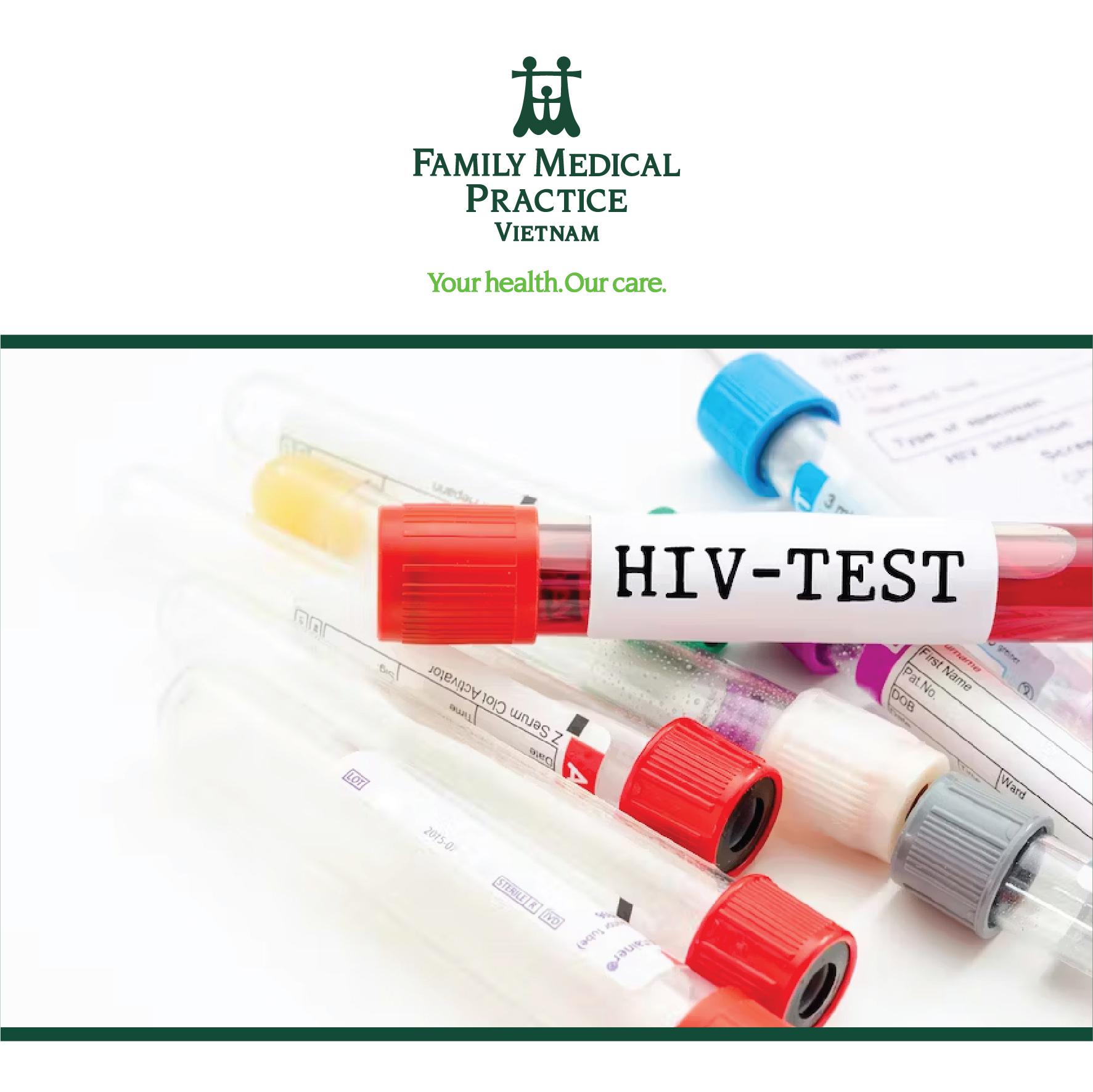HIV Testing Service at FMP Hanoi

Why HIV Testing Matters?
HIV, or Human Immunodeficiency Virus, is a global health concern that affects millions of individuals worldwide. Early detection through HIV testing is paramount, and here's why it matters.
HIV is a virus that attacks the body's immune system, making it less effective in fighting off infections and diseases. If left untreated, HIV can lead to the more severe stage known as AIDS (Acquired Immunodeficiency Syndrome), which can result in life-threatening illnesses.
However, the key to managing HIV and preventing its progression to AIDS is early detection. HIV testing allows individuals to learn their HIV status. If a person tests positive, they can access medical care and treatment that can slow the virus's progression, allowing them to lead a healthier life.
Moreover, knowing one's HIV status is essential for preventing the further transmission of the virus. Individuals who are aware that they are HIV-positive can take steps to protect their sexual partners by practicing safe sex and using precautions like condoms. It's also a critical component of preventing mother-to-child transmission during pregnancy and breastfeeding.
What are the HIV Testing method?
HIV Testing Methods for Screening and Diagnosis HIV tests are highly accurate, but their ability to detect the virus depends on the specific test used. There are three primary types of HIV tests: antibody tests, antigen/antibody tests, and nucleic acid tests (NAT).
Antibody tests
Antibody tests are designed to identify HIV antibodies in a person's blood or oral fluid. These tests generally take between 23 to 90 days after exposure to detect HIV. Most rapid tests, including the only FDA-approved HIV self-test, fall under this category. It's worth noting that antibody tests using blood from a vein can detect HIV earlier than those using blood from a finger prick or oral fluid.
Antigen/antibody tests
Antigen/antibody tests, on the other hand, are designed to detect both HIV antibodies and antigens. When a person is exposed to HIV, their immune system produces antibodies, while antigens are foreign substances that trigger the immune response. In the case of HIV, an antigen called p24 appears before antibodies develop. Antigen/antibody tests are commonly recommended for lab-based testing in the United States. When performed in a lab using blood from a vein, these tests can typically detect HIV between 18 to 45 days after exposure. There are also rapid antigen/antibody tests available that use a finger prick, with a detection window ranging from 18 to 90 days post-exposure.
Nucleic acid tests (NATs)
Nucleic acid tests (NATs) are designed to directly detect the presence of the HIV virus in the bloodstream. NATs are particularly useful for individuals with recent or suspected exposure to HIV who have initially tested negative using an antibody or antigen/antibody test. NATs are known for their ability to detect HIV relatively early, with a window period of 10 to 33 days post-exposure.
It's important to choose the appropriate HIV testing method based on your specific circumstances and potential exposure. Understanding the window periods of these tests is crucial for accurate HIV diagnosis and prevention.
HIV testing service at FMP Hanoi
Currently, at FMP Hanoi, we provide two HIV testing methods as following:
HIV Quick Test:
HIV quick tests, also known as rapid HIV tests, are diagnostic tests designed to provide fast results regarding a person's HIV status. Here's how they work:
- Procedure: A healthcare professional or trained personnel collects a sample of blood (usually from a finger prick), oral fluid (saliva), or urine, depending on the specific type of rapid test being used.
- Testing Time: One of the key advantages of quick tests is their speed. They typically provide results within 15 to 20 minutes, making them valuable for on-the-spot testing and immediate counseling.
- Detection: Rapid tests primarily detect HIV antibodies, which the body produces in response to the presence of the virus. If the test detects HIV antibodies in the sample, it's considered a preliminary positive result.
- Confirmation: It's important to note that a positive result from a rapid test needs further confirmation through a more specific test, usually an ELISA test to confirm the presence of HIV.
- Advantages: Quick tests are convenient for situations like HIV testing in clinics, mobile testing units, or outreach programs. They are user-friendly, offer rapid results, and are particularly valuable for increasing access to testing in various settings.
ELISA Test (Enzyme-Linked Immunosorbent Assay):
The ELISA test is a laboratory-based diagnostic assay used for the detection of HIV antibodies in a person's blood. Here's how it works:
- Procedure: A blood sample is collected from a person through venipuncture (drawing blood from a vein), typically in a clinical laboratory setting.
- Testing Time: Unlike rapid tests, ELISA tests are not rapid. They usually require more time to process, and the results are not available immediately. It may take a few hours to receive the results.
- Detection: ELISA tests are highly sensitive and specific. They can detect the presence of HIV antibodies in a person's blood. If HIV antibodies are detected, the result is considered preliminary positive.
- Confirmation: A positive result from an ELISA test is always followed by a confirmation test, such as a Western blot or PCR (Polymerase Chain Reaction) test. These tests provide additional specificity to confirm HIV infection.
- Advantages: ELISA tests are considered the gold standard for HIV testing due to their accuracy. They are commonly used for initial screening in healthcare settings, blood banks, and other clinical laboratories.
----------------------------------------------
Family Medical Practice Hanoi
Address: 298i Kim Ma - Van Phuc Diplomatic Compound, Ba Dinh District, Hanoi
Message us: m.me/FamilyMedicalPracticeHanoi
Hotline: 024 3843 0748
Zalo/Viber/Whatsapp: 094 443 1919
 We use cookies on this website to enhance your user experience
We use cookies on this website to enhance your user experience